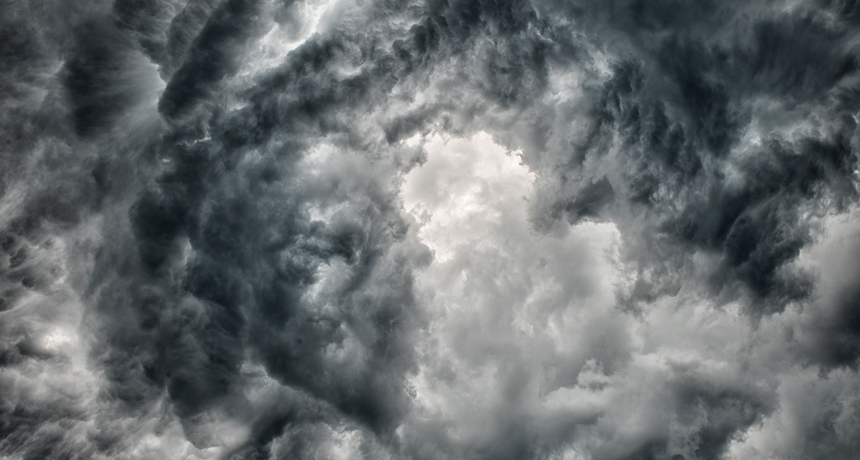
Though they be but little, they are fierce.
Airborne particles smaller than 50 nanometers across can intensify storms, particularly over relatively pristine regions such as the Amazon rainforest or the oceans, new research suggests.
In a simulation, a plume of these tiny particles increased a storm’s intensity by as much as 50 percent.Called ultrafine aerosols, the particles are found in everything from auto emissions to wildfire smoke to printer toner. These aerosols were thought to be too small to affect cloud formation. But the new work suggests they can play a role in the water cycle of the Amazon Basin — which, in turn, has a profound effect on the planet’s hydrologic cycle, researchers report in the Jan. 26 Science.
“I have studied aerosol interactions with storms for a decade,” says Jiwen Fan, an atmospheric scientist at the Pacific Northwest National Laboratory in Richland, Wash., who led the new study. “This is the first time I’ve seen such a huge impact” from these minute aerosols.
Larger aerosol particles greater than 100 nanometers, such as soot or black carbon, are known to help seed clouds. Water vapor in the atmosphere condenses onto these particles, called cloud condensation nuclei, and forms tiny droplets. But water vapor doesn’t condense easily around the tinier particles. For that to be possible, the air must contain even more water vapor than is usually required to form clouds, reaching a very high state of supersaturation.
Such a state is rare — larger aerosols are usually also present to form water droplets, removing that extra water from the atmosphere, Fan says. But in humid places with relatively low background air pollution levels, such as over the Amazon, supersaturation is common, she says.
From 2014 to 2015, Brazilian and U.S. research agencies collaborated on a field experiment to collect data on weather and pollution conditions in the Amazon Basin. As part of the experiment,…
The post Overlooked air pollution may be fueling more powerful storms appeared first on FeedBox.